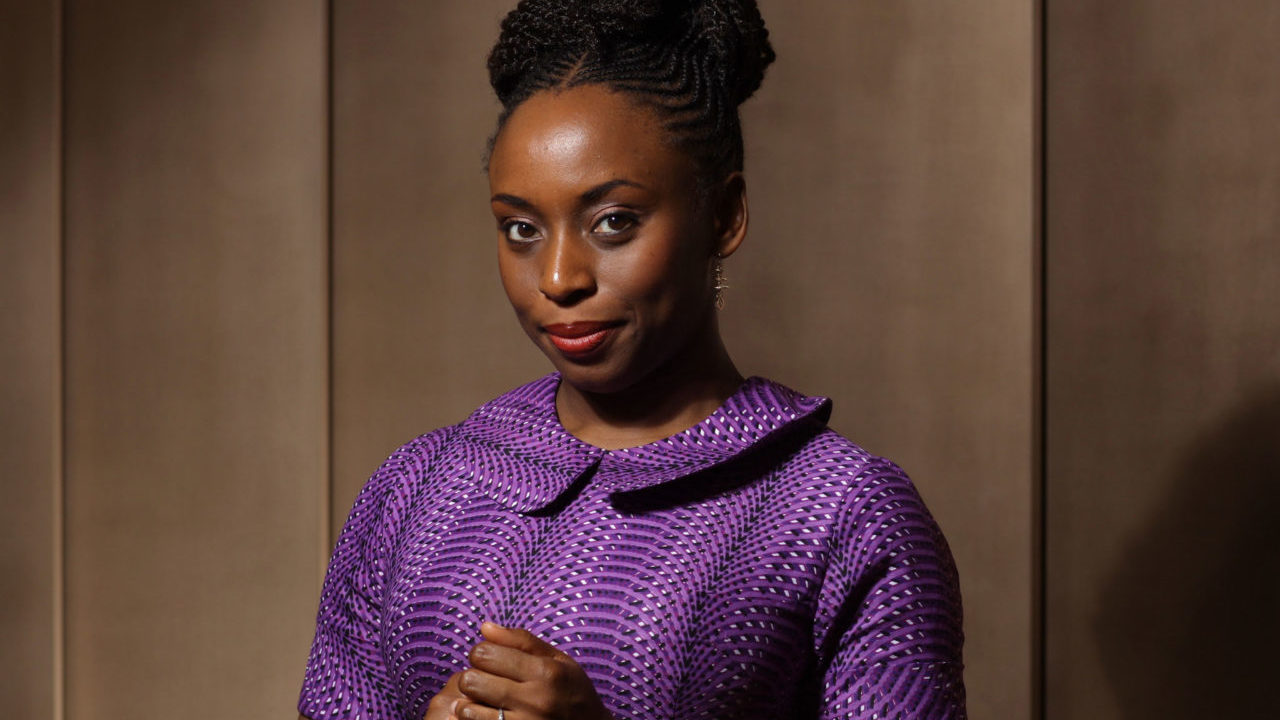 David Akinfenwa
David Akinfenwa
The era of digitisation and technological development has enabled many African creative businesses – including fashion – to gain global visibility, reach a broader, more diverse audience and customer base, and various opportunities for more revenue.
[ad]
According to the statistics published by the United Nations, digital technologies have advanced more rapidly than any innovation in human history – reaching around 50 per cent of the developing world’s population in only two decades and transforming societies. By enhancing connectivity, financial inclusion, access to trade and public services, technology can be a great equaliser.
The fashion industry, on the other hand, has continued to drive a significant part of Africa and the global economy at large, becoming the continent’s second-largest sector after agriculture. The fashion and textile industry, with an estimated market value of $31 billion in 2020, and growing yearly, according to the reports on the Statista market forecast. Revenue is projected to reach $8.56bn in 2022.
Fashion has always been at the forefront of innovation — from the invention of the sewing machine to the rise of e-commerce. Like tech, fashion is forward-thinking and cyclical.
These digital innovations are changing the rules of interpersonal relationship, business and communication. And today, fashion technology is growing at a faster rate than ever.
Robots that sew and cut fabric, AI algorithms that predict style trends, clothes to be worn in virtual reality — an order of innovations show how technology is automating, personalising, and speeding up the fashion space.
Taking hold of the opportunity to open more revenue streams and business models, fashion companies are partnering with technology providers, snapping up startups, and even building their tech.
Meanwhile, as the industry faces a long-overdue reckoning with its environmental and social impact, it is reexamining processes across the value chain to reinvent itself.
The digital transformation in fashion has been set in motion by the greater adoption of the Internet by the general public on a global scale, which has forced businesses to develop e-commerce strategies and incorporate the multi-channel approach into their business models. These digital transformations could include launching an e-commerce store and partnering with other e-commerce store builders like Selar and Shopify to create digital products, such as training, ebooks, and courses and monetise their knowledge.
Developments in digital content and customer experience have also reached an extent as never seen before.
African fashion has, in recent times, attracted significant global media attention.
With technology gradually marking a significant territory in the industry, fashion entrepreneurs now leverage digital tools to reach a broad audience from their homes’ comfort.

Technologies shaping the Fashion business
As people’s real lives become increasingly intertwined with the digital world, many designers and brands are embracing the latest technologies to push the limits of manufacturing, production, marketing and distribution.
In recent years, fashion brands have been utilising Artificial Intelligence to improve the shopping experience for customers, analyse data, increase sales, predict trends, and provide inventory-related advice. It’s almost impossible to head to a fashion brand’s website and not find some form of AI chat technology that’s being used to help enhance the customer experience.
Chatbots and touchscreens are AI used in stores to improve customer experience and customised product suggestions.
Live video streaming has also significantly impacted the business of fashion. Instagram commerce has dominated the post-COVID market in 2022, dominating everything from virtual events to health. High-definition streaming media formats are now possible thanks to 5G. Customers can now “try on” designs before buying them. Specific brands, including Tommy Hilfiger and Gucci, provide digital showrooms to determine the market’s desire. Some companies, like Taylor Stitch, let clients request digital designs before they are produced. Similar to this, many online-only eyewear retailers like Firmoo and Glasses Direct provide a digital “try-before-you-buy” option that lets customers see the frames on their faces before making a purchase.

On social media, audience panels are defined by new technologies like Heuritech. It uses image recognition technology to access the forms, designs, colours, and characteristics of materials in social media images to predict future fashion trends.
In 2017, Google, in collaboration with the German clothing retailer, Zalando, also conducted a similar experience. The neural network was trained to comprehend choices in colours, textures, and styles. The algorithm was then utilised to generate designs based on the users’ preferred styles.
These innovations demonstrate how AI is the foundation of upcoming fashion industry breakthroughs, influencing everything from trend forecasting to how customers may view and purchase things.
The global pandemic has increased the fashion industry’s digital integration, but it is safe to say that the fashion business was already on its way to shifting online. While fashion creatives are experiencing a fast digital transition, e-commerce platforms such as Selar, Shopify and Paystack provide many revenue options for creatives to monetise their knowledge as digital products.
In addition, blockchain technology has allowed businesses to tokenise non-fungible assets, making it simple to hold, acquire, swap, and sell each asset. The blockchain solution creates a physical-digital link between products and their digital identities on a blockchain. Just like with digital currency, Blockchain offers a cryptographic seal or serial number that acts as the physical identifier linked to the individual product’s “digital twin”, as explained by Forbes magazine.
Thanks to new software solutions that have recently become accessible, brands and factories can now receive real-time feedback and notifications from businesses regarding defective or damaged goods. This enables them to provide adequate items on schedule while reducing costs and waste. They can also increase client satisfaction by quickly identifying potential company threats.
Software for management, such as IQMS, is one instance. Manufacturing uses enterprise resource planning (ERP) software to track and gather real-time production data as goods are produced.

Creating revenue opportunities for fashion creatives
Indeed, we live in the ‘insta-age’ of technology. Digitisation is changing how fashion is consumed and has trained fashion entrepreneurs to want instant access to the latest trends to make more revenue in the business.
Digital integration is gaining momentum in the industry, and the emergence of new technologies has created revenue opportunities for fashion creatives.
According to a Mckinsey report, 32 per cent of fashion executives said digital technologies would continue to bring great opportunities in 2022. Increasing sustainability awareness is another opportunity for growth, according to the expectation of 12 per cent of fashion executives.
Considering the evolving market and the necessity for e-commerce fashion, fashion entrepreneurs must tap into the hundreds of opportunities to make wealth by exploiting the digital space by selling digital products – that include- e-books, online courses, membership, graphics design pieces and crafts patterns and downloadable prints.
Fashion entrepreneur, Tope Williams- Adewunmi, has leveraged on monetising their knowledge through courses, ebooks, and training on getting into the fashion business online.
She said, “I have an ebook on how to start a clothing factory that has done well in revenue on Selar. I also run online courses, and I am currently running a free Masterclass live on Instagram, which is also selling on the Selar e-commerce platform.”
She added, “in addition, I have a Price Calculator for creatives to help them increase their profit without losing customers or running out of cash. I might start selling digital patterns sometime this year as well.”
Talking about her experience, she said, “the process has been straightforward. In fact, I discovered it just at the right time when I was looking for how to get paid in different currencies.”
Williams-Adewunmi explains: “In terms of revenue, it is hard to track it all in Selar since people prefer direct bank transfer. The book has just been a gateway to multiple conversions for me.”
Patrebydesign, popularly known for selling training and courses on how luxury wedding dresses as digital products on Selar, also added that it had been a lucrative venture.
“In terms of revenue, I can’t give specific figures, but it has been very lucrative. Six figures in dollars and counting.”
One crucial way to remain relevant in an uber-competitive world is by creating various revenue streams for your fashion business. E-books and courses on styling can add to your revenue stream.
Many people nowadays are turning to the virtual world to get styling tips and ideas. As a designer, you can help your customers by setting up an online consultation service and training.
Part of fashion business success depends on how well one can divide up the proverbial eggs when it comes to revenue generation. These are ways to diversify revenue streams while maintaining cohesiveness in your fashion brand. Having multiple revenue streams reduces business risks, especially during market uncertainty.








